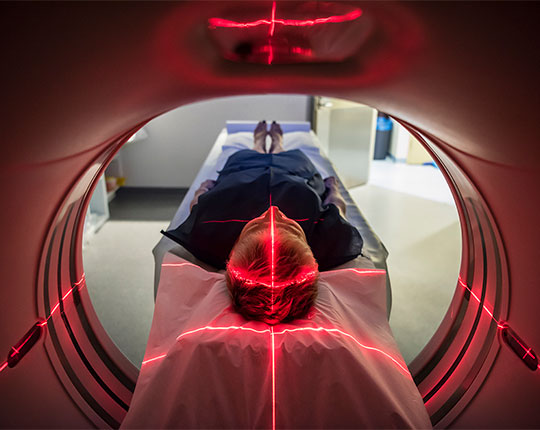Five Reasons

Cardiac PET imaging represents a significant advancement in cardiovascular diagnostics, offering numerous clinical and operational benefits over traditional methods like SPECT imaging. Recent findings have highlighted the transformative potential of Cardiac PET, its real-world applications, and practical solutions for its adoption in clinical practice.
Complete the form below or call 724-933-5570 to explore mobile trailer solutions that fit your needs and location.
By clicking “Start a Conversation,” you agree to our Terms and Conditions to receive marketing email communications from CDL Nuclear Technologies with relevant content and updates on products and services. You may unsubscribe from these communications at any time.

Cardiac PET/CT stands out for its exceptional diagnostic accuracy1. Compared to treadmill and SPECT imaging, Cardiac PET achieves unparalleled precision in detecting coronary artery disease (CAD) and other cardiac conditions with precise quantitative measurements of myocardial blood flow, which are instrumental in confirming diagnoses and informing treatment strategies. This high level of accuracy reduces the likelihood of false positives or negatives, ensuring that patients receive the correct diagnosis and appropriate treatment.



One of the primary advantages of Cardiac PET is its safety. The technology involves lower radiation exposure2 than traditional methods like SPECT. Additionally, Cardiac PET offers quick image acquisition, taking only five minutes, allowing the entire study to be completed within 30 minutes3. This efficiency benefits both patients and healthcare providers, reducing time spent in the clinic and enhancing overall patient experience.

Traditional cardiac stress tests can be uncomfortable and time-consuming for patients. In contrast, Cardiac PET/CT is a faster, non-invasive procedure that typically takes less than an hour from start to finish3. The comfort and accuracy of PET imaging are enhanced by high-quality, high-resolution images that are attenuation-corrected, eliminating the need to account for situations that can compromise diagnostic integrity1. This patient-centric approach ensures that patients have a more pleasant experience without compromising the accuracy of their diagnosis.



Cardiac PET/CT not only diagnoses existing heart conditions but also offers valuable prognostic information. The ability to provide quantitative myocardial blood flow measurements adds significant value1 to visual interpretations by offering precise data. This capability is crucial for identifying multi-vessel coronary artery disease and monitoring responses to lifestyle changes, risk factor modifications, and therapeutic interventions. This detailed information helps predict the likelihood of future cardiac events, allowing clinicians to develop more effective, personalized treatment plans that can prevent severe complications down the line.

Cardiac PET allows for the accurate assessment of coronary flow reserve2, providing essential physiological information that complements anatomical data from catheterization. This comprehensive view aids in making informed decisions about revascularization and other treatments, improving patient care. The ability to assess absolute blood flow and coronary flow reserve with Cardiac PET imaging is vital in accurately determining disease severity and optimizing therapeutic approaches for patients1.

